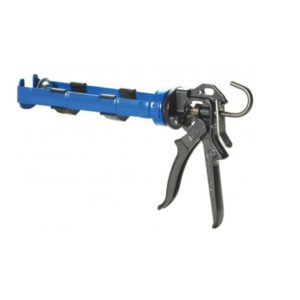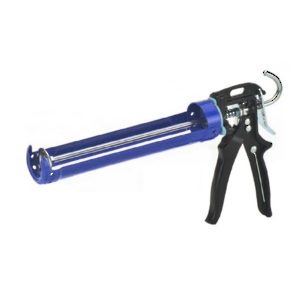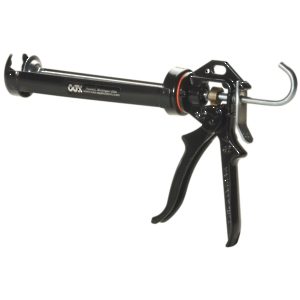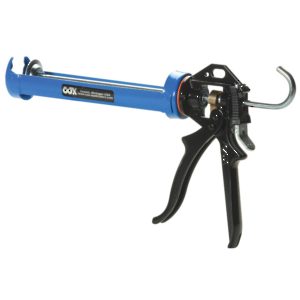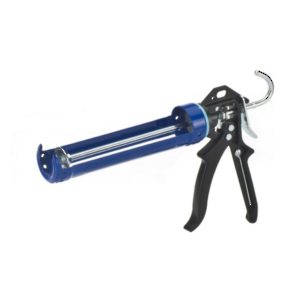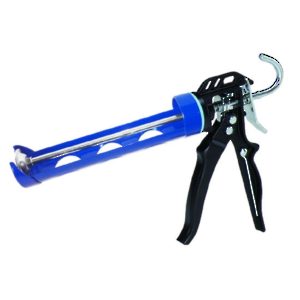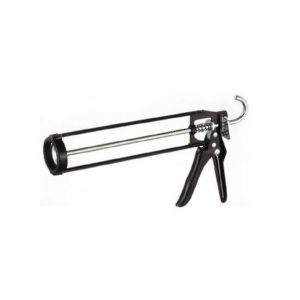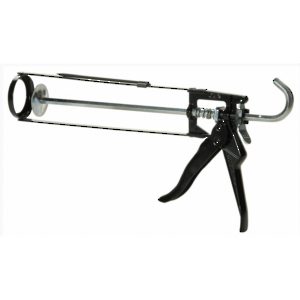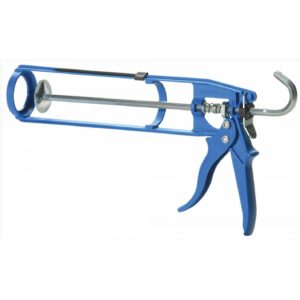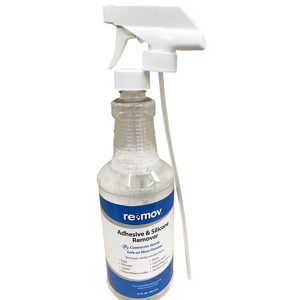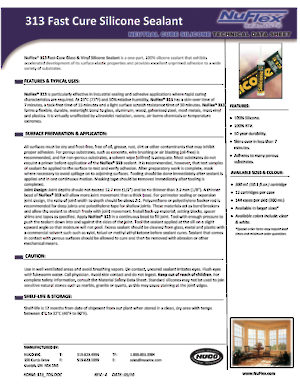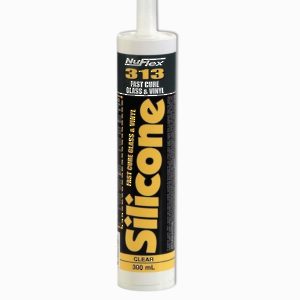Technical data sheet
NuFlex® 313 Silicone Sealant
Product # 943130011
Fast-Cure Glass & Vinyl
NuFlex® 313 Fast-Cure Glass & Vinyl Silicone Sealant is a one-part, 100% silicone sealant that features accelerated development of its elastic surface properties and offers excellent unprimed adhesion to a wide variety of substrates.
ADVANTAGES AND BENEFITS
- 100% silicone
- 100% RTV
- 50-year durability
- Skins-over in less than 7 minutes
- Adheres to many porous substrates
NuFlex® 313 is particularly effective in industrial sealing and adhesive applications where rapid curing characteristics are required.
- 100% RTV
- 50-year durability
- Skins-over in less than 7 minutes
- Adheres to many porous substrates
NuFlex® 313 is particularly effective in industrial sealing and adhesive applications where rapid curing characteristics are required.
TECHNICAL SPECIFICATIONS
Product #
943130011
Brand
Nuco
Finish/Color
Translucent
Base
100% RTV Silicone
Optimal Adherence to
Galvanized steel, Vinyl, Glass, Non-oiled Wood, Plastic, Aluminum
Features
Fast Setting, Fast Cure, Weatherproof, Superior Bond, UV Resistant
Tack-Free / Skin Over Time
7 minutes
Tooling Time
Immediately tool the sealant
Packaging Specifications
Plastic Cartridge
VOC Concentration (EPA Method 24)
28 grams per liter
Recommended Use
Interior, Exterior, Vinyl/PVC Windows, Construction Grade
Volume
300 ml
Standards and Certifications
ASTM C920, CAN/CGSB-19.13-M87
SUGGESTED PRODUCTS
- Applicator Guns for Sealant, Caulking, and Glue Cartridges
- Skeleton Applicator Guns for Sealant Cartridge, Caulking, and Glue
- Lacquer
APPLICATION
All surfaces must be dry and frost-free as well as free of oil, grease, rust, dirt, or other contaminants that may inhibit proper adhesion. For porous substrates, such as concrete, wire brushing or air blasting (oil-free) is recommended, and for non-porous substrates, a solvent wipe (oil-free) is adequate. Most substrates do not require a primer before application of the NuFlex® 313 sealant. It is recommended, however, that test samples of sealant be applied to the surface to test and verify adhesion. After preparatory work is complete, mask where necessary to avoid spillage onto adjoining surfaces. Tooling should be done immediately after sealant is applied, in one continuous motion. Masking tape should be removed immediately after tooling is completed.
Joint Design: Joint depths should not exceed 12.7 mm (1/2" ) and be no thinner than 3.2 mm (1/8" ). A thinner bead of NuFlex® 313 will allow more joint movement than a thick bead. For perimeter sealing or expansion joint design, the joint width-to-depth ratio should be about 2:1. Polyurethane or polyethylene backer rod is recommended for deep joints and polyethylene tape for shallow joints. These materials act as bond breakers and allow the sealant to stretch freely with joint movement. Install back-up material, setting blocks, spacer shims, and tapes as specified. Apply NuFlex® 313 in a continuous bead to fill joint. Tool with enough pressure to push the sealant down into and against the sides of the joint. Tool the sealant applied at the sill on a slight upward angle so that moisture will not pool. Excess sealant should be cleaned from glass, metal and plastic with a commercial solvent such such as xylol, toluol or methyl ethyl ketone before sealant cures. Sealant that comes in contact with porous surfaces should be allowed to cure and then be removed by abrasion or other mechanical means.
Joint Design: Joint depths should not exceed 12.7 mm (1/2" ) and be no thinner than 3.2 mm (1/8" ). A thinner bead of NuFlex® 313 will allow more joint movement than a thick bead. For perimeter sealing or expansion joint design, the joint width-to-depth ratio should be about 2:1. Polyurethane or polyethylene backer rod is recommended for deep joints and polyethylene tape for shallow joints. These materials act as bond breakers and allow the sealant to stretch freely with joint movement. Install back-up material, setting blocks, spacer shims, and tapes as specified. Apply NuFlex® 313 in a continuous bead to fill joint. Tool with enough pressure to push the sealant down into and against the sides of the joint. Tool the sealant applied at the sill on a slight upward angle so that moisture will not pool. Excess sealant should be cleaned from glass, metal and plastic with a commercial solvent such such as xylol, toluol or methyl ethyl ketone before sealant cures. Sealant that comes in contact with porous surfaces should be allowed to cure and then be removed by abrasion or other mechanical means.
IMPORTANT INFORMATION
Caution: Use in well-ventilated areas and avoid breathing vapors. On contact, uncured sealant irritates eyes. Flush eyes with lukewarm water. Call physician. Avoid skin contact and do not ingest. Keep out of reach of children. For complete safety information, consult the Material Safety Data Sheet.
Shelf life & storage:
Shelf life is 12 months from date of shipment from our plant when stored in a clean, dry area with temps between 4 °C to 32 °C (40 °F to 90 °F).
Ensure surface to be sealed is dry and free of oil, grease, dust and other foreign materials.
Designed for porous substrates including concrete that requires brushing, or oil-free compressed-air while non-porous substrates require oil-based solvents. No primer necessary before application. It is however recommended that the sealant be tested on smaller surfaces to judge how well it adheres. To prevent overflow to adjacent surfaces, mask as necessary. Smoothing should be done immediately after application using continuous movement. Remove masking tape immediately after smoothing.
Joint Design:
Joint depths should not exceed 12.7 mm (1/2 ) and be no thinner than 3.2 mm (1/8" ). A thinner bead of NuFlex® 313 will allow more joint movement than a thick bead. For perimeter sealing or expansion joint design, the ratio of joint width to depth should be about 2:1. Polyurethane or polyethylene backer rod is recommended for deep joints and polyethylene tape for shallow joints. These materials act as bond breakers and allow the sealant to stretch freely with joint movement. Install back up material, setting blocks, spacer shims and tapes as specified. Apply NuFlex® 313 in a continuous bead to fill joint. Tool with enough pressure to push the sealant down into and against the sides of the joint. Tool the sealant applied at the sill on a slight upward angle so that moisture will not pool. Excess sealant should be cleaned from glass, metal and plastic with a commercial solvent such as xylol, toluol or methyl ethyl ketone before sealant cures. Sealant that comes in contact with porous surfaces should be allowed to cure and then be removed with abrasion or other mechanical means.
Shelf life & storage:
Shelf life is 12 months from date of shipment from our plant when stored in a clean, dry area with temps between 4 °C to 32 °C (40 °F to 90 °F).
Ensure surface to be sealed is dry and free of oil, grease, dust and other foreign materials.
Designed for porous substrates including concrete that requires brushing, or oil-free compressed-air while non-porous substrates require oil-based solvents. No primer necessary before application. It is however recommended that the sealant be tested on smaller surfaces to judge how well it adheres. To prevent overflow to adjacent surfaces, mask as necessary. Smoothing should be done immediately after application using continuous movement. Remove masking tape immediately after smoothing.
Joint Design:
Joint depths should not exceed 12.7 mm (1/2 ) and be no thinner than 3.2 mm (1/8" ). A thinner bead of NuFlex® 313 will allow more joint movement than a thick bead. For perimeter sealing or expansion joint design, the ratio of joint width to depth should be about 2:1. Polyurethane or polyethylene backer rod is recommended for deep joints and polyethylene tape for shallow joints. These materials act as bond breakers and allow the sealant to stretch freely with joint movement. Install back up material, setting blocks, spacer shims and tapes as specified. Apply NuFlex® 313 in a continuous bead to fill joint. Tool with enough pressure to push the sealant down into and against the sides of the joint. Tool the sealant applied at the sill on a slight upward angle so that moisture will not pool. Excess sealant should be cleaned from glass, metal and plastic with a commercial solvent such as xylol, toluol or methyl ethyl ketone before sealant cures. Sealant that comes in contact with porous surfaces should be allowed to cure and then be removed with abrasion or other mechanical means.



